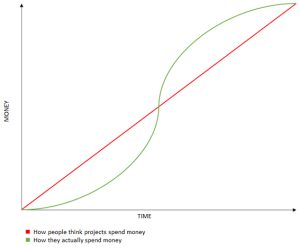It is perhaps considered one of the ‘driest’ elements of project management – looking after the budget. Certainly it seems to fill some people with dread, but I’m not really sure why that should be. There isn’t some black magic going on when you manage a project budget and you certainly don’t need a degree in accountancy to manage (even relatively large) budgets well.
But one thing is for sure: your project needs a budget. There are a number of very good reasons a project needs a budget, but I’ve picked my top three. Here they are.
REASON #2: You need to know if you’re on track
It’s a complete understatement to say that it’s very helpful to know if your project is progressing on track. And spend is a reasonably good substitute for progress. If you’re roughly halfway through your project and have spent roughly half your budget, that’s a fairly good indicator that you are on track. That said (and this is a budgeting secret I learnt embarrassingly late in my career): project spend tends to follow an S-Curve. That means that spend is generally quite low at the start of a project, ramps up hugely during delivery, and then flattens out again towards the end. Understanding that spend is not linear is incredibly important to staying on top of your project finances. If you think spend is linear, you will only be “on budget” three times in your project: at the beginning, with no money spent; half-way through, with half the money spent; and at the end with all the money spent. I don’t fancy those odds.

The lesson here is to use your spend (versus your original budget) to tell you if you’re on track. It’s a rough estimate, but an enormously helpful one. But make sure you have a realistic idea of where your spend should be at this point in the project. If you budgeted £100 for a piece of work and have spent £98, is it almost done – or some way off?
Coming up: Reason #3: You need to know when and where to take corrective action.
Our Project Cost Plan template will help with all of this, it really will. Or if you really want to get into it, we highly recommend you check out Chapter 6 of our book.
To receive these blogs, project management tips and video tutorials straight to your inbox click here to sign up to our newsletter.
Image by anncapictures from Pixabay

